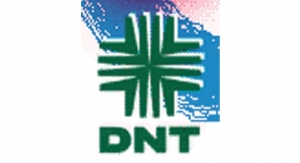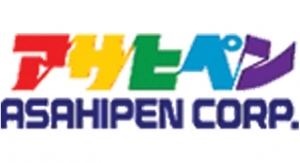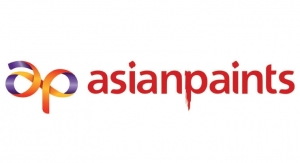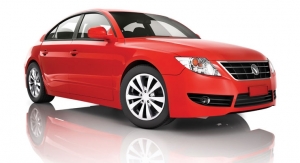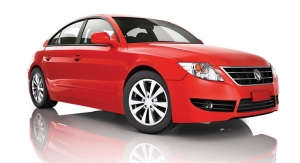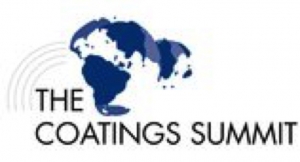07.05.17
Osaka, Japan
www.kansai.com
PUBLIC COMPANY
YEAR ESTABLISHED: 1918
REVENUE: $2.911 billion
(2015: $2.906 billion)
MARKETS SERVED
Automotive coatings; Decorative coatings; Industrial coatings; Marine and protective coatings
KEY EXECUTIVES
Hiroshi Ishino, president; board of directors: Kunishi Mouri, Masaru Tanaka, Koji Kamikado, Hidenori Furukawa, Jun Senoo. Shinji Asatsuma.
Operating in Japan, Europe, the U.S., Southeast Asia, India and China, Kansai Paint Co. Ltd. offers a broad range of coatings solutions for various markets. It divides its business into automotive (38 percent), industrial (25 percent), decorative (25 percent), and marine and protective (7 percent) segments.
Kansai Paint operates three automotive paint plants from its headquarters in Osaka, Japan and is the leading supplier of automotive coatings to Toyota, Suzuki, Nissan, Honda, Peugeot and Renault worldwide.
Kanai’s Business Overview by Segment – Japan: In the automotive coatings market sector, although automobile production declined year on year, sales were at the prior-year level due to coating exports and other factors. Sales rose sharply in the marine coatings sector as a result of recovery in the shipbuilding market and sales expansion efforts.
India: In the automotive coatings sector, the Group worked to further increase market share amid continuously rising automobile production. The Group engaged in sales promotion activities in the decorative coatings sector as well, especially during the demand season, at a time of continuing demand expansion spurred by growth in the Indian economy. Asia: In Thailand, automobile production showed no signs of a full-scale recovery, and demand remained weak. Business results in Indonesia were affected by a decrease in automobile production resulting from weakness in the Indonesian economy. In China, overall sales decreased due to factors such as weak demand for construction machinery, despite signs of sales recovery in the automotive sector, partly as a result of the introduction of tax incentives for compact cars in the second half of the fiscal year.
Equity in earnings of affiliates in China rose on an increase in the share of sales to non-Japanese automakers. The overall business results for Asia declined year on year, in part because of the impact of currency conversion. Africa: Despite continuing sales promotion efforts, sales fell slightly on a local currency basis at a time of weakness in the economies of South Africa and neighboring countries. Investment in sales promotion and other factors put pressure on profits, and substantial currency conversion effects contributed to weak business results. Other regions: In Turkey, although growth continued, the impact of depreciation of the Turkish lira on raw materials prices and other factors put pressure on profits, and currency conversion substantially affected the business results. Whereas automobile production in North America increased, growth in automobile production in Europe was sluggish, and equity in earnings of affiliates decreased.
www.kansai.com
PUBLIC COMPANY
YEAR ESTABLISHED: 1918
REVENUE: $2.911 billion
(2015: $2.906 billion)
MARKETS SERVED
Automotive coatings; Decorative coatings; Industrial coatings; Marine and protective coatings
KEY EXECUTIVES
Hiroshi Ishino, president; board of directors: Kunishi Mouri, Masaru Tanaka, Koji Kamikado, Hidenori Furukawa, Jun Senoo. Shinji Asatsuma.
Operating in Japan, Europe, the U.S., Southeast Asia, India and China, Kansai Paint Co. Ltd. offers a broad range of coatings solutions for various markets. It divides its business into automotive (38 percent), industrial (25 percent), decorative (25 percent), and marine and protective (7 percent) segments.
Kansai Paint operates three automotive paint plants from its headquarters in Osaka, Japan and is the leading supplier of automotive coatings to Toyota, Suzuki, Nissan, Honda, Peugeot and Renault worldwide.
Kanai’s Business Overview by Segment – Japan: In the automotive coatings market sector, although automobile production declined year on year, sales were at the prior-year level due to coating exports and other factors. Sales rose sharply in the marine coatings sector as a result of recovery in the shipbuilding market and sales expansion efforts.
India: In the automotive coatings sector, the Group worked to further increase market share amid continuously rising automobile production. The Group engaged in sales promotion activities in the decorative coatings sector as well, especially during the demand season, at a time of continuing demand expansion spurred by growth in the Indian economy. Asia: In Thailand, automobile production showed no signs of a full-scale recovery, and demand remained weak. Business results in Indonesia were affected by a decrease in automobile production resulting from weakness in the Indonesian economy. In China, overall sales decreased due to factors such as weak demand for construction machinery, despite signs of sales recovery in the automotive sector, partly as a result of the introduction of tax incentives for compact cars in the second half of the fiscal year.
Equity in earnings of affiliates in China rose on an increase in the share of sales to non-Japanese automakers. The overall business results for Asia declined year on year, in part because of the impact of currency conversion. Africa: Despite continuing sales promotion efforts, sales fell slightly on a local currency basis at a time of weakness in the economies of South Africa and neighboring countries. Investment in sales promotion and other factors put pressure on profits, and substantial currency conversion effects contributed to weak business results. Other regions: In Turkey, although growth continued, the impact of depreciation of the Turkish lira on raw materials prices and other factors put pressure on profits, and currency conversion substantially affected the business results. Whereas automobile production in North America increased, growth in automobile production in Europe was sluggish, and equity in earnings of affiliates decreased.


